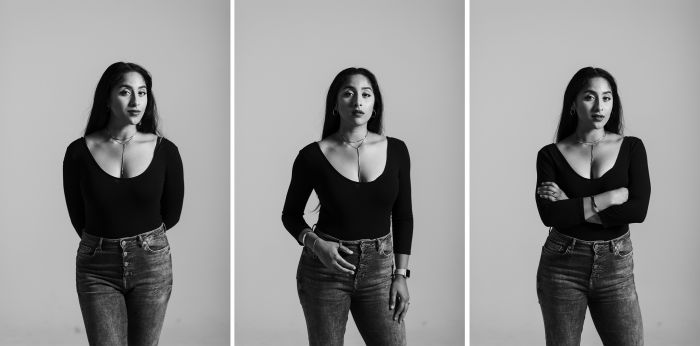
Welcome to the live series we’re doing bi-monthly on Profoto’s Instagram called “Slice of Pye”. We’ll be covering a myriad of topics and showcasing a ton of Profoto gear in action over the course of the next year so please join us over on IG Live!
Tune in to our next episode: July 17rd at 2PM PST!
In this episode, we will learn the difference between broad and short lighting combined with different poses to create flattering portraits.
Gear Used
Broad Light

Broad lighting is a portrait lighting pattern where the portion of the subject’s face that is turned toward the camera is lit most brightly. This is the ‘broad’ side of the face – from camera position it is wider than the ‘short’ side of the face, the side that is turned away from the camera. Broad lighting is typically less flattering than short lighting as it widens the look of the face. However, it is useful for subjects whose faces are very narrow that would like the perception of a wider face. You can see more examples of this type of light pattern here.
Short Light

Short lighting is a classic portrait lighting pattern where the subject is lit from the side of their face that is farthest from the camera. The portion of the face that is most brightly lit is ‘shorter’ than if the light were positioned on the side of the face that is closest to the camera. It is a flattering lighting pattern for most faces and has the effect of visually narrowing a wider face. You can see more examples of this type of light pattern here.
Flattering Poses Paired with Short Lighting
After taking out demonstration shots I wanted to go into a small posing example of how to really utilize this light direction to help accentuate Shiv’s features and create flattering poses for her body. You’ll see in the video we move from a more traditionally feminine pose and posture to a more dominating stance and look in the middle and right images, all while keeping the same lighting style. I wanted to give you a variety of poses that still work if you keep in mind where your light is coming from.






Get Connected!